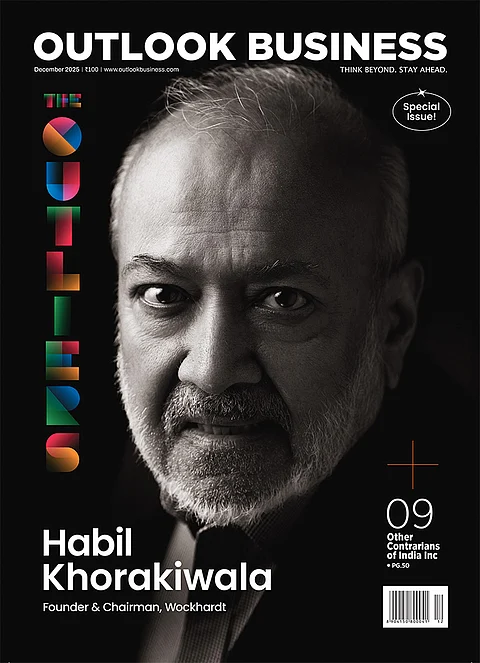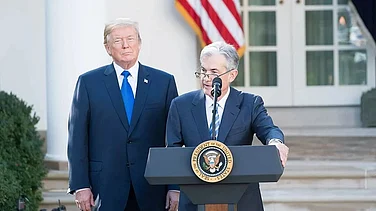
Nagesh Kumar calls for continued negotiations with the US to roll back steep tariffs on Indian exports
He recommends boosting domestic demand and curbing dumping of cheap Chinese goods
The MPC member urges diversification of export markets and greater R&D and brand-building by Indian industry
The recent wave of trade measures by the United States is prompting calls for a coordinated response from India to safeguard jobs and small businesses. According to Nagesh Kumar, external member of the Monetary Policy Committee (MPC), the country needs to act on multiple fronts to offset the impact of the 50% tariffs imposed by the Donald Trump Administration on Indian exports.
The tariffs, already in effect since the end of August, come alongside other restrictive measures, such as, a $100,000 fee on H1B visas, the HIRE Act discouraging outsourcing, and a 100% tax on patented pharmaceuticals. Together, they threaten India’s trade prospects with its largest partner and key market for both goods and services.
“India’s policy response has to cover several directions simultaneously. First is obviously to continue negotiations with the US to bring down the tariffs to more reasonable levels. These negotiations are on, and hopefully there would be a good outcome,” Kumar told Outlook Business in an interview. In the latest MPC meeting, he voted for a pause in policy rates like the rest of the members but was among only two who shifted their stance from “neutral” to “accommodative.”
Kumar, in the minutes of the meeting, had noted that while the immediate effect on India’s overall GDP growth may be limited to about 40–60 basis points, the damage to employment and small businesses could be substantial. The US accounts for around 20% of India’s merchandise exports, but nearly one-third of exports of labour-intensive goods such as textiles, leather, gems and jewellery, and processed food products like shrimp. These industries are dominated by micro, small and medium enterprises (MSMEs) and together employ about 40% of the country’s manufacturing workforce.
He said the challenge comes at a time when India’s economy is showing signs of strength. Growth in the first quarter of the current fiscal year stood at 7.8%, surpassing expectations and prompting an upward revision of annual projections to 6.8%. The expansion was driven mainly by rural consumption and front-loaded government capital expenditure. However, private investment continues to lag despite robust profits and healthy capacity utilisation, reflecting uncertainty in the global trade environment.
Alongside continued diplomatic engagement, Kumar says India must tap its domestic market more effectively and prevent local industries from being undermined by unfair competition. “We need to exploit the domestic markets for our labour-intensive goods better. We should also protect the domestic market especially in labour intensive industries from the dumping of cheap Chinese goods. This has become a serious issue in the Southeast Asian countries, too, like Thailand and Indonesia, which have begun taking action. India should also act to contain the damage. The Prime Minister’s call for ‘vocal for local’ is indeed timely.”
Diversifying export destinations is another key part of the strategy. India’s recent trade agreements with the United Kingdom and the European Free Trade Association (EFTA) — the latter taking effect on October 1, 2025 — mark important steps toward broadening market access. Progress on the India–EU FTA and planned negotiations with the Eurasian Economic Community could further open European markets for Indian products. “All these agreements will open up access to virtually the entire European market to Indian goods, especially labour-intensive goods, some of which presently attract peak tariffs,” says Kumar, who also serves as the Director and Chief Executive of the Institute for Studies in Industrial Development (ISID).
He also adds that Indian firms need to move up the value chain. “Indian industry needs to pay adequate attention to innovation and product development through enhancing their R&D activity and brand-building globally,” he says, suggesting that building global brands and investing in technology would help reduce dependence on low-margin exports vulnerable to trade disruptions.
According to him, MSMEs, the segment most exposed to the US tariffs, should receive targeted support through liquidity provision, credit guarantees and temporary moratoriums. Such measures, he believes, would help cushion the employment impact while new markets and domestic demand pick up. In that case, India’s inflation outlook provides some room for policy flexibility. Headline inflation has trended downward, with projections for 2025–26 now revised to 2.6% from 3.7% in the Reserve Bank’s June MPC meeting. The GST reforms are also believed to help moderate prices further.


























